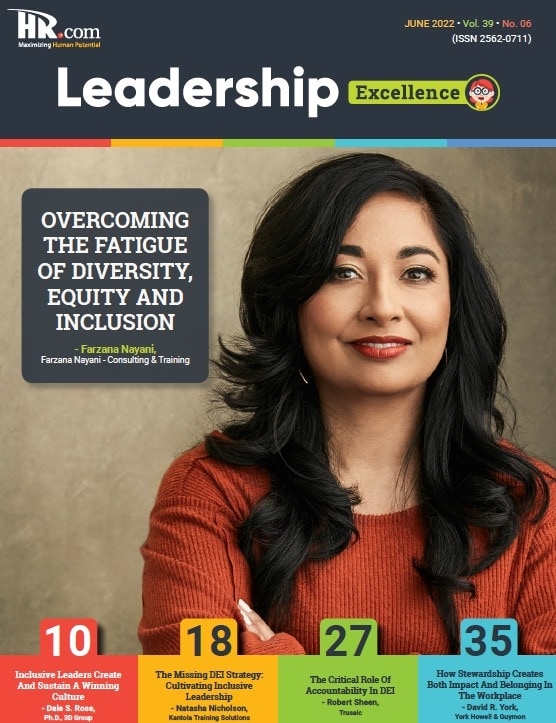Three watch outs when evaluating potential for Men and Women
Co-authored by Stefanie Mockler, Ph.D. & Melissa Vazquez, Ph.D.; Originally published by HR.com’s Leadership Excellence, June 2022
Despite making up half of the workforce, compared to men, women continue to be underrepresented in higher-level leadership roles, particularly within corporate contexts. Recent estimates suggest that women occupy approximately 50% of entry-level roles, 30% of senior manager/direct roles, and only 20% of roles at the SVP and above (McKinsey & Co, 2021). While various barriers contribute to this gender gap in leadership ranks, research suggests that when women break “social norms” by taking on traditionally masculine characteristics (e.g., dominance, assertiveness), they are perceived as having less potential for advancement into higher-level positions (Cuddy, Fiske, & Glick, 2004; Heilman, 2001).
While there are various factors that contribute to this lack of representation, we recently explored how organizational decision-makers’ evaluations of potential (i.e., hiring managers, HR, leadership assessors) contributes to women’s likelihood to even be considered for leadership roles.
For instance, in the leadership assessment industry, external consultants work closely with HR, hiring managers, and other talent professionals to evaluate a candidate’s fit for a role, as well as their capability of advancing beyond that level in the future (often referred to as an evaluation of their leadership potential). Research suggests that, generally, higher potential leaders tend to exhibit greater levels of assertiveness, independence, self-awareness, optimism, and flexibility versus those who may be ‘well-placed’ at a given level.
To better understand differences in evaluations of potential to advance within the organization for women and men, we explored our research and assessment database which includes data from hundreds of leadership assessments across industries.
We posed three core questions:
- Do notable differences exist in the profiles of women evaluated as higher potential compared to women evaluated as lower potential?
- Do notable differences exist in the profiles of women evaluated as higher potential compared to men evaluated as higher potential?
- And, if differences exist, what are the implications for helping organizations (and their leaders) support women in actualizing potential?
Our analyses led us to several interesting insights.
Compared to women seen as having average or lower potential, women noted as having higher potential endorsed themselves as more likely to:
- Demonstrate assertiveness in their leadership
- Closely monitor the progress of activities
- Provide direct and constructive feedback
And, less likely to challenge authority and push against the status quo.
Compared to men seen as having higher potential, women with higher potential are more likely to:
- Look for more opportunities to be in charge
- Lead with deep technical knowledge
- Provide ongoing feedback to guide performance
- Communicate openly and socialize proactively
- Engage others in dialogue and discussion
- Attune to the needs of their audience
- Focus on execution and achieving results
These insights, combined with our knowledge of what helps to minimize bias in evaluations of performance and potential lead us to three overall recommendations for decision-makers who are responsible for evaluating performance, as well as making hiring and promotion decisions.
1. Value and support women who are willing to ‘shake things up’ and challenge the status quo!
Over time, particularly in organizational contexts, women have and continue to receive backlash for what are deemed ‘assertive’ or ‘dominance’ behaviors, such as direct communication, engaging in tough conflict, and being more focused on results than people. These behaviors are viewed as more masculine, and while rewarded for men, are often detractors for women.
This organizational reality has created cultures where women may not feel comfortable directly voicing their opinions, raising concerns, and challenging the status quo – and for good reason, as these behaviors may lead to backlash.
In our analyses, women who were deemed having higher potential were more likely to demonstrate assertiveness in their leadership, closely monitor progress of activities, and provide direct and constructive feedback compared to women with lower potential scores. However, these women were also less likely to challenge authority. Thus, it seems women can lead assertively and maintain their high potential status; however, the direction of their assertiveness matters. In other words, it can be directed down and across, but not ‘up’.
Supporting this, research has shown that women tend to refrain from engaging in organizational politics, as they’ve likely learned (through observation, direct experience, and advice from managers) that doing so may undermine their success.
We suspect this results in ideas, innovations, and valuable feedback leaving “left on the table” as women may feel the need to dilute their perspectives to operate in organizational contexts.
Moving forward, we encourage decision-makers and leaders to embrace and encourage women who are willing to challenge authority, push past the status quo, and come up with new ways to drive results and evolve our businesses. To do this, organizations must create psychologically safe environments that promote interpersonal risk-taking.
Ask yourself, does your organization encourage women, especially high potentials, to speak up and voice perspectives? If not, where can changes be made?
2. In the hiring and promotion process, use structured interviews, leverage cross-calibration with a panel of interviewers & ensure decisions are based on factors directly relevant to the job/role in question and are objective
When making decisions regarding who to hire and promote into leadership roles, it is important to understand what is “mission critical” for the role. This involves centering in on job relevant characteristics and shifting through possible “noise” in the process to confirm talent decisions are dampening biases and stereotypes from emerging. We encourage leaders to ask themselves and each other:
- “What is most critical for this role in the first 3, 6, and 9 months?”
- “What are the most important characteristics that will support success in this position moving forward?”
- “What is happening within the business that will influence this person’s success now and into the future? What does that mean about what attributes this person needs to display and master?”
Further, ensuring multiple evaluators engage in the process can help mitigate potential biases, create space for challenging others’ perceptions of “effective leadership behavior,” and lead to a more well-rounded assessment of a leader’s capabilities and potentials. We should critique harmful practices that do not align with evidence-based decision-making and celebrate those that do.
3. Coach leaders to operate with a balanced focus on results & people
Overall, our data indicates that women, compared with men, are held to a higher standard to be deemed as “high potential leaders” – in other words, while men can be deemed high potential when they focus on results and getting done, women must display results-focused behaviors and lead with a social, engaging, and accommodating style. Thus, women are expected to be both results-focused and collaborative, direct and socially outgoing, and attuned to others’ needs while able to get things done.
From our perspective, this poses an opportunity to raise the bar for ALL leaders. We believe that the best, most impactful and inspiring executives have a broad set of tools in their toolboxes. And regardless of gender, should be able to navigate results, relationships, and various cultures in order to achieve strong outcomes and bring people along. This, from our perspective, is the profile of a truly high potential leader.
The implication, overall, then is not to lower the bar for high potential women, but rather to raise it for high potential men.
As organizations continue to look inward into their own practices, we must ask ourselves how we are evaluating potential for leadership roles? Are there behavioral differences that bias us based on gender? How can we set women up for success given the ongoing gender inequities?
Decision-makers in organizations have a lot of power to flip the script and make a difference – we hope this piece equips you with some helpful insight and action to drive change and continue to create a future where leaders with diverse backgrounds, genders, and experiences can thrive.


